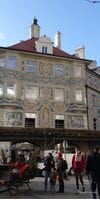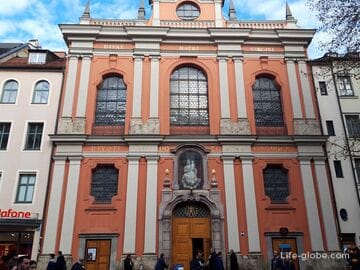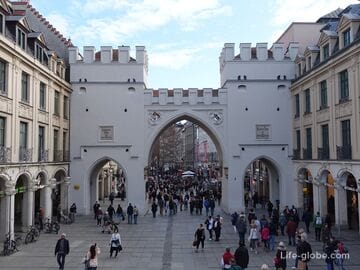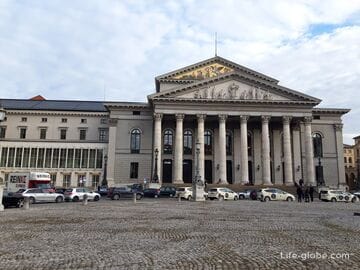Ruffini House (German title: Ruffinihaus) is a historic monument and a jewel of Munich.
House Ruffini consists of a group of three houses set in the historic old town of Munich on the curb of the streets Sendlinger straße underground station (Sendlinger Straße), Rosental (Rosental) and Rindermarkt, at the address: Sendlinger Strasse 1.
House Ruffini was built by Gabriel von Zeidler at the beginning of the 20th century, between 1903 and 1905, in the place where once stood the tower Ruffini (Ruffini tower, German title: Ruffiniturm), which was the first urban strengthening of Munich. The tower was demolished in 1808. The house got its name in honor of the tower, which, in turn, was named after Johann Baptista Ruffini.
Three houses form the house Ruffini, have different facades and mansard roofs, and apparently create the impression of three completely separate and unrelated to each other buildings. Homes are situated around a triangular courtyard with a small tower.
The complex houses Ruffini stands out for the characteristic architecture of the turn of the century with special attention to details: artistic facades, Bay Windows and balconies.
Today the house Ruffini located, including, retail and commercial premises.
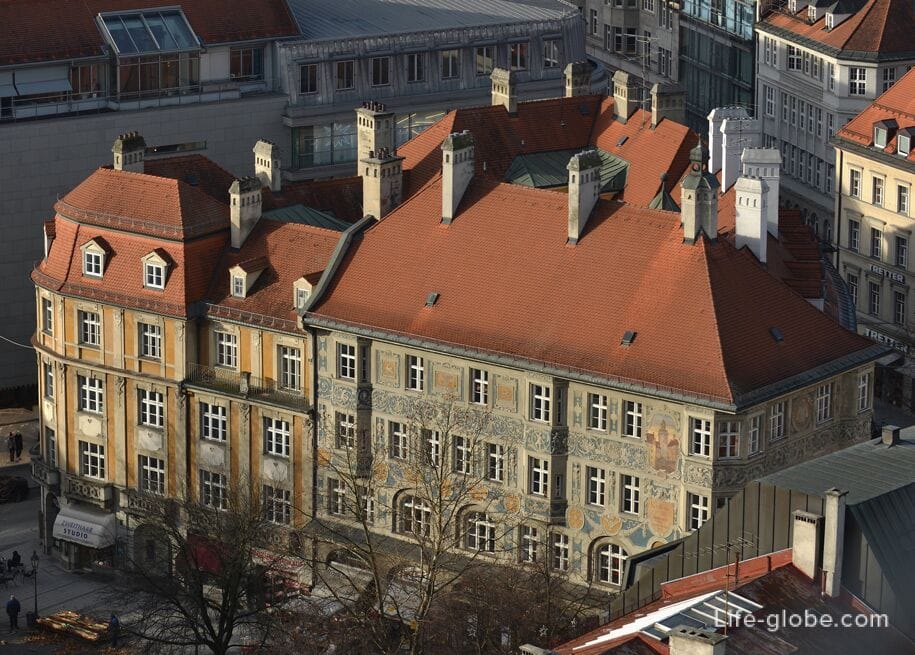
The main building, facing North (the street and the square Rindermarkt) is made in white and blue colors, has an impressive façade with leninym ornaments, bas-reliefs, frescoes and Bay Windows with polygonal plans. On the roof is a small turret.
The upper floor of the house, facing North-West, has a terrace behind a small balustrade.
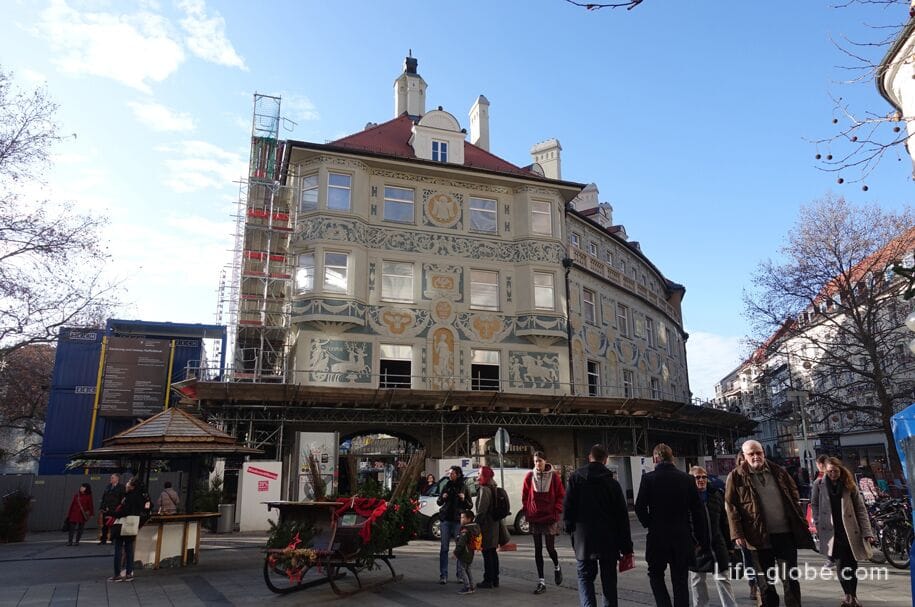
On the West side of the facade has a slightly convex shape and follows the curve of the pedestrian and shopping street Sendlinger Strasse. Read more about the street Sendlinger straße...
Corner house in the South-West side (intersection of Sendlinger straße and Rosenthal), built in the late Baroque style. The facades of the first floor of the building divided by round-arched canopies that look like the arcade.
The facades of the second and third floors of the building are divided by pilasters with capitals and rich consoles flanking the paired Windows on both sides. Pilasters continue to the fourth floor, going under the ledge, framing the house around the circumference.
On the South side of the house is a Bay window that ends under the loggia on the fourth floor.
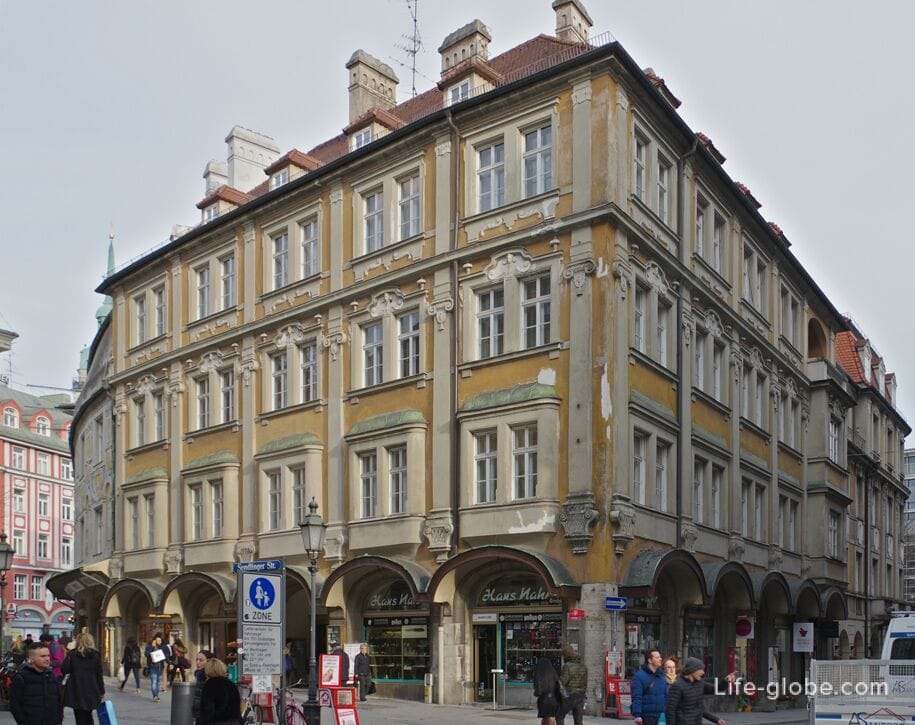
The East wing of the house facing Rindermarkt has a straight line base and two different facade.
The building in the Southeast corner is the small part of the complex houses Ruffini.
The house has a rounded shape. Second floor architectural underlined by massive protruding stone balconies, and the fourth cornice.

The place where today stands the house itself is historically significant because it marks the point of the previous transition between the old core of the city and his first expansion in the 13th century.
History of the house of Ruffini
In the late middle ages space under the house was divided into small sections.
From 1708 to 1721 years, the land purchased by two families: Puttrich and Ruffini. Around 1800, was built a single four-storey building in the Baroque style, which housed various small shops.
Under the new road expansion, the city acquired the property in 1898, and held an architectural design competition. Gabriel von Seidl won the contest and proposed to develop a block called "Drei Häuser" ("Three houses"), while maintaining the impression of small structures and individual previous buildings.
Ruffinianus was damaged during the Second world war. Initially, he was temporarily protected and rebuilt in the years 1954-55 Erwin Sleichim with slight modifications. In 1973 Schleich initiated further renovation of the building.
In 2008-2009 was also conducted further work.
In the former apartments on the upper floors are now administrative offices. The first floor is occupied by commercial premises, including Munich's traditional stores, a bar.




